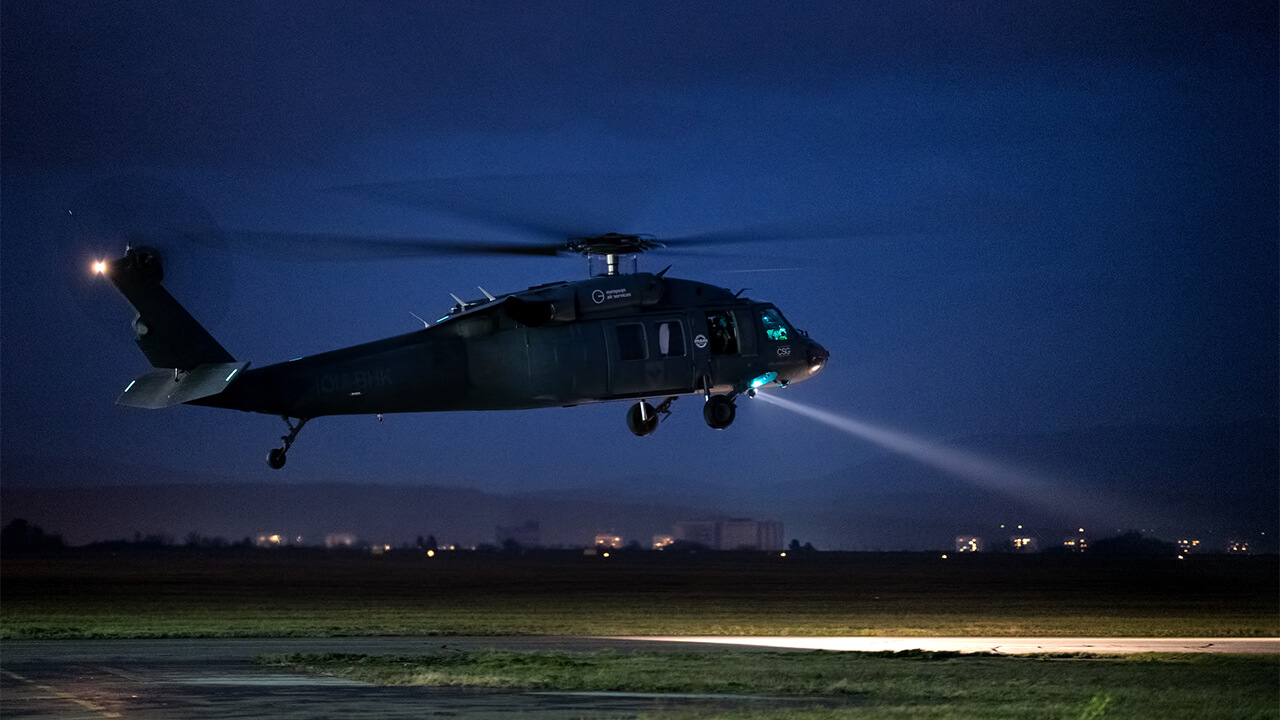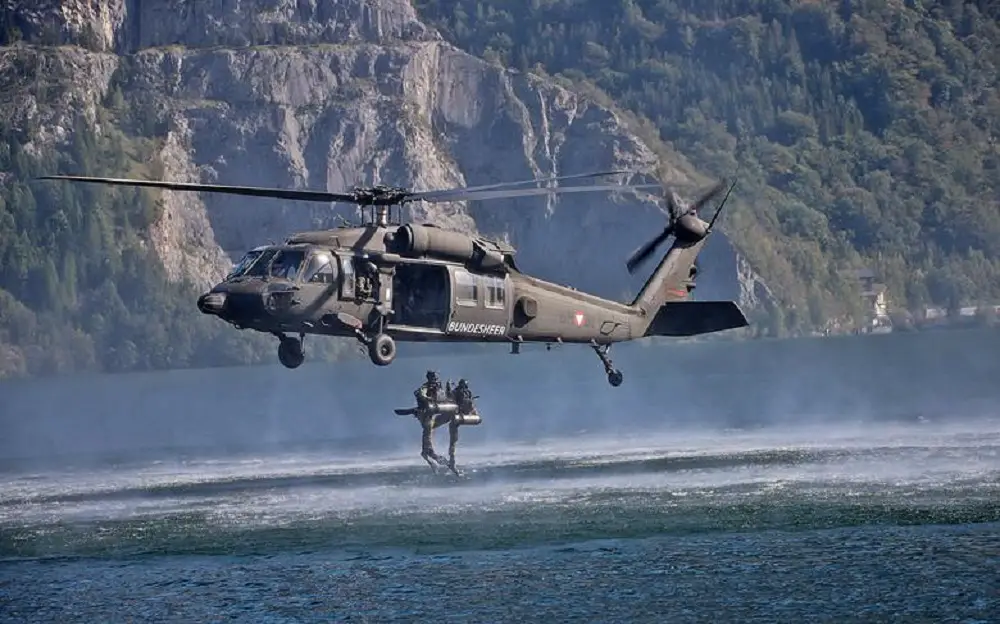Every Little Thing You Need to Understand About the UH 60 Helicopter
The UH-60 helicopter, a foundation of United state Military aeronautics given that its launching in 1979, stands for an impressive blend of engineering and functional versatility. As army demands advance, so also does the helicopter, with ongoing innovations aimed at enhancing its abilities and incorporating contemporary technologies.
Background of the UH-60
Developed in the late 1970s, the UH-60 Black Hawk helicopter became a feedback to the united state Army's need for a versatile utility helicopter that could perform a variety of goals under difficult problems. The impetus for its layout was the imperfections identified in the earlier helicopters used during the Vietnam Battle, particularly in terms of speed, maneuverability, and survivability.
The Black Hawk was developed by Sikorsky Aircraft, including advanced innovations and products to improve its performance and longevity. It was officially presented into solution in 1979, swiftly ending up being a vital asset for army operations - uh 60. Its ability to transfer troops, clinical discharge, and logistical support in both combat and humanitarian missions made the Black Hawk an important part of the united state Military's aeronautics fleet
Throughout the years, the UH-60 has been continuously upgraded, adapting to the changing nature of war and the developing demands of modern army operations. Its functional history includes engagement in significant problems, peacekeeping objectives, and catastrophe alleviation initiatives, strengthening its credibility as a trusted and effective helicopter in various environments worldwide.

Layout and Requirements
The style of the UH-60 Black Hawk helicopter continually shows a dedication to operational effectiveness and versatility. Created by Sikorsky Aircraft, this medium-lift utility helicopter includes a sleek, aerodynamic fuselage that enhances rate and ability to move. Its tandem blades system, defined by two counter-rotating blades, minimizes resonance and enhances lift capacity, permitting much safer operations in varied settings.
The UH-60 is powered by two T700-GE-701C turboshaft engines, giving an optimum rate of roughly 180 knots and a series of around 400 nautical miles. Its durable airframe is constructed from advanced composite materials, guaranteeing longevity while maintaining a relatively low weight. The helicopter has a maximum gross weight of regarding 22,000 pounds, sustaining a versatile payload configuration.

Objectives and roles
A functional platform, the UH-60 Black Hawk helicopter serves a wide variety of roles and goals within armed forces operations. Created largely for troop transportation, it can lugging approximately 11 soldiers, making it an important possession for quick deployment and logistical assistance.
In addition to army transportation, the UH-60 excels in clinical emptying (MEDEVAC) missions, geared up with innovative medical tools to provide essential treatment throughout transit. Its capacity to run in varied settings enhances its efficiency in combat search and rescue (CSAR) procedures, where speedy removal of personnel is important.
The helicopter likewise plays a substantial role in reconnaissance and surveillance goals, making use of onboard sensing units and tools to gather intelligence. Its convenience prolongs to logistical assistance, capable of transferring supplies and devices to ahead operating bases.
In battle procedures, the UH-60 can be outfitted with numerous weapon systems, enabling it to offer close air assistance. Its multi-role ability he said makes the Black Hawk a crucial tool for modern-day military forces, adapting flawlessly to the advancing needs of combat zone circumstances and making certain objective success throughout a series of functional contexts.
Performance and Abilities
Known for its durable efficiency, the UH-60 Black Hawk helicopter boasts remarkable abilities that enhance its operational effectiveness across various objectives. uh 60. This multi-role airplane is geared up with powerful twin-engine Turbomeca Arriel 1D1 engines, giving phenomenal rate and maneuverability, with an optimum cruise ship speed of around 150 knots and a functional range of around 400 maritime miles
The Black Hawk's sophisticated avionics and fly-by-wire control systems considerably boost flight safety and handling, permitting it to operate in varied environments, consisting of unfavorable weather. Its flexibility is further exhibited by its ability to bring as much as 11 completely outfitted troops or a haul of roughly 8,000 extra pounds, making it perfect for army transportation, medical evacuation, and logistical assistance goals.
Additionally, the UH-60 is made for survivability, featuring strengthened airframes, ballistic defense for staff and travelers, and progressed countermeasure systems to avert threats. The helicopter's dexterity and rate, combined with its capacity for fast release, make it a crucial asset in contemporary armed forces operations, guaranteeing that it stays a crucial element of tactical air assistance and combat zone movement.
Future Advancement

One substantial emphasis is the integration of innovative avionics systems, which will certainly enhance situational awareness with enhanced navigating and communication capacities. This includes the possible use man-made intelligence to aid pilots in decision-making and mission planning.
Additionally, future variants might incorporate sophisticated materials and layout functions to bolster the helicopter's durability and decrease its radar trademark, improving survivability in disputed environments.
The introduction of hybrid-electric propulsion systems is likewise imminent, intending to improve gas performance and reduce logistical concerns. Such innovations can extend functional variety and lower the helicopter's ecological impact.

Verdict
The UH-60 helicopter represents a significant innovation in army aeronautics because its introduction in 1979. The UH-60's withstanding visibility emphasizes its crucial role in contemporary army operations and highlights the recurring development of army aviation innovation.
The UH-60 helicopter, a keystone of United state Army air travel since its debut in 1979, stands for an impressive blend of engineering and operational versatility. As military needs evolve, so as well does the helicopter, with continuous innovations intended at enhancing its capabilities and integrating contemporary innovations.The design of the UH-60 Black Hawk helicopter continually mirrors a commitment to functional efficiency and flexibility. Established by Sikorsky Airplane, this medium-lift energy helicopter includes a streamlined, wind resistant body that boosts speed and ability to move.The UH-60 helicopter stands for a significant development in armed forces aeronautics because its introduction in 1979.